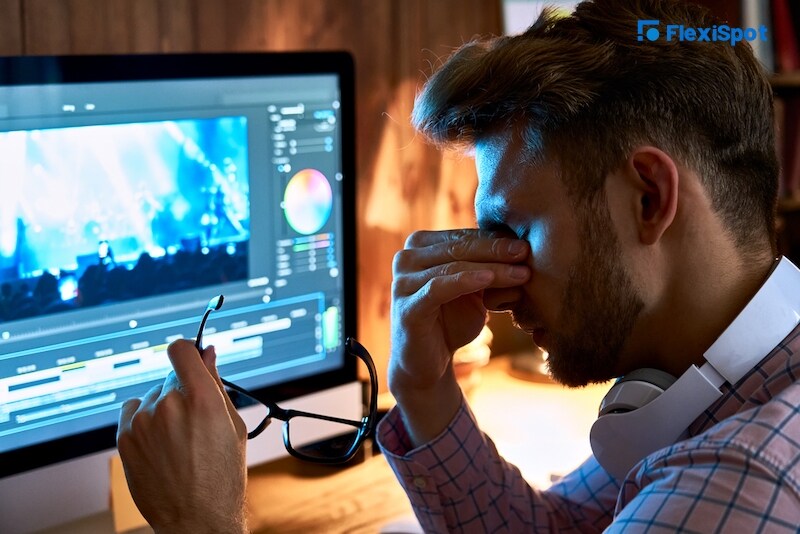If your occupation is in an office, you have heard of the lady who passed away at her workplace because of long working hours and stress. This case, among others, has made it to the news in times of yore and emphasizes an issue that health experts have been telling us for several days; sitting for long hours a day at a desk kills. However, so many of us acknowledge the confirmation that labor is good for our health. In the appraisal by Burton and Waddell on whether work is suitable for people's well-being and health (2006), they conclude that employment is good for mental and physical health and wellbeing and can be good therapy for persons with common problems related to health. Also, for individuals suffering from common health conditions, it is advised that they should remain or return to working as fast as possible for their health which needs to improve.
Several health issues that should be dealt with affect the workforce. The health issues across populations lead to long-term sickness and affect safety and productivity at work. They are consistently related to musculoskeletal problems like upper limb and neck, back pains, stress, and mental health. Health problems at workplaces result from work, such as the environment or activities part of one’s occupation.
As of today, let us help you understand the most prominent health problems found in workers and their remedies.
Common Physical Health Problems
1. Headaches
One of the most prominent health problems harming workers is headaches. Working in a competitive environment comes with much stress, which usually transforms into headaches. Other than this, poor body postures are said to cause headaches. To avoid having headaches at work, you need to take regular breaks during work. A small break after long hours of work can do wonders. It would be best to practice using the proper postures in the office and daily workouts in the workplace. Workers can achieve this by using ergonomic desks or switching to standing desks. Besides the desk, using an ergonomic chair that is correctly adjusted and is high enough to prevent straining to view your computer while working can help prevent migraine in the workplace for many workers.
2. Musculoskeletal disorders and pain in the lower back
Even as you may assume that back pain affected only your guardians after they got so old and couldn’t work anymore, it has become a problem for workers. Analysts say it is due to the amplification of sedentary poses, such as sitting for longer than expected hours every day. In addition, poor posture can have confounding results on one’s body as time passes by. According to research by the University of Georgetown, back pain is one of the significant reasons staff not can work. It is not only slumping because of straight sitting but also because having to bend your back a lot can cause pain in your lower back.
Office workers are at risk of repetitive strain injuries like tendonitis. Several musculoskeletal disorders develop over time as they can be caused by repetitive movements, handling loads, awkward positions, lack of breaks, and high work demands. You can prevent it by checking your posture while sitting at your desk. The simple gesture of repeated standing can improve blood flow and engage the body's muscles. Finally, by making simple improvements to your workplace ergonomics, you can achieve optimum comfort and productivity while reducing the risk of backaches. It is performed using reclining office chairs instead of a straight-back chair.
3. Obesity
Even though this subject is not new, the issue is worsening because the constant lack of bodily activities, the growing prevalence of foods rich in sugar, and increased stress levels contribute to increased obesity in workplaces worldwide. Obesity is a health problem that can increase cholesterol levels in the blood, clotting of blood in the body, and several other medical conditions that are termed as dangerous. Also, it can affect one’s postures and muscles, which results in decreased health in people's bodies and minds. Several people working long hours with less physical activity are affected by this health problem.
Luckily, obesity is prevented by workers being careful with the foods they eat, especially during lunch break hours. It is also controlled by using a fitness chair that can remove excess fat from your body through. One good example is the Sit2Go 2-in-1 fitness chair which is extraordinary. You can use it for relaxation and exercise by peddling or cycling to maintain strong muscles and legs.
4. Heart disease
Another major health problem found in workers is heart ailment. Even though people’s hearts are not in their work, it is undoubtedly getting exposed. According to researchers from Britain, people that work in offices for more than 10 hours are at a 67 percent high risk of developing heart disease. Sadly, this is happening in the workplace. People are taking up long hours at work and exercising for fewer hours, hence are exposed to toxins; insufficient sleep, stress, and engagement in performance can lead to cardiovascular diseases.
Preventing this means doing physical activities like walking every hour and avoiding smoking cigarettes for your health. Also, a standing desk in the workplace can help prevent heart diseases due to the constant bodily activities. Using a standing desk can be compared to walking. Shifting your weight from one foot to another can stimulate your muscles similarly to walking.
5. Cancer
The European Agency for safety and health at work revealed that cancer accounts for up to 24% of global work-related deaths. Occupational cancer stems from workers being in contact with carcinogenic substances. Certain substances are related to cancer, and these carcinogens can be predominant in specific industries. Asbestos-related diseases are among the well-known incidences of health problems in the workplace. They include gastrointestinal cancer, lung cancer, and larynx cancer. Also, more research shows that persons employed in office settings for over ten years and who use most of their hours working on their desks have a 44% increased chance of getting colon cancer.
It is prevented by doing physical activities like moving around more frequently and eating good healthy food. To move around more in the workplace, you can use a sit-stand desk perfect for your health. It makes it easy to switch to different seating and standing positions. A sit-stand desk enhances brain activity, keeping you alert and healthy, and relieving chronic pain. Also, workplace managers can help reduce the emitted toxins rates to prevent workers from being affected.
6. Hearing loss
A study by NIOSH conducted among United States workers who worked in places with high noise exposures found that 18% of the workers suffered from hearing loss. People most affected by this health problem mainly work in the mining, manufacturing, and construction industries. It is also a problem in healthcare and hospitality settings and needs prevention by applying better hearing conservation strategies. In the office, enclosed quiet spaces can ease the impact of low noise.
There are ergonomic chairs with padded headrests that can help lessen the noise that can lead to hearing loss. Noise can lead to migraine, which can affect you at work; hence using the padded headrest can be extremely helpful for your comfort. Apart from that, they also have noiseless rollers that enable you to move back and forth without making noise for your fellow workers in an office. Encouraging workers to maintain silence is good for the productivity of the organization.
7. Eyestrain
Since work in today’s world needs working in front of a desktop all day, many workers develop eyestrain. It is commonly associated with a painful sensation and dry eyes and happens due to staring at the computer for very long hours. Mostly, programmers who spend most hours coding are aware of the eyestrain phenomenon. According to Mayo Clinic, gazing at a computer screen for a lengthy time can cause overly sensitive eyes and blurriness, long-term eye problems, sore necks, and headaches.
It is avoided by using proper lighting at an employee's desk or adjusting your computer's brightness. You can also minimize the way you glare at your screen by fitting your screen with an anti-glare screen and increasing your text's size. Finally, having the perfect posture at your desk prevents straining your central nervous system and muscles. Workers can achieve this by using an ergonomic office chair with a 3D lumbar support that supports your weight and cradles your back.
To conclude, while it is almost impossible to reduce the health risks in the workplace, proper measures can help reduce them. Some of the workplace factors that can impact the health of workers by reducing their health as mentioned earlier problems include;
- Providing social support for the workers
- Fixing the working hours and avoiding overworking employees
- Place rules that promote justice and fairness in the workplace
- Employers should buy equipment that can make work easier and create a comfortable working environment, such as ergonomic furniture for employees.
- Offer health insurance for workers.






